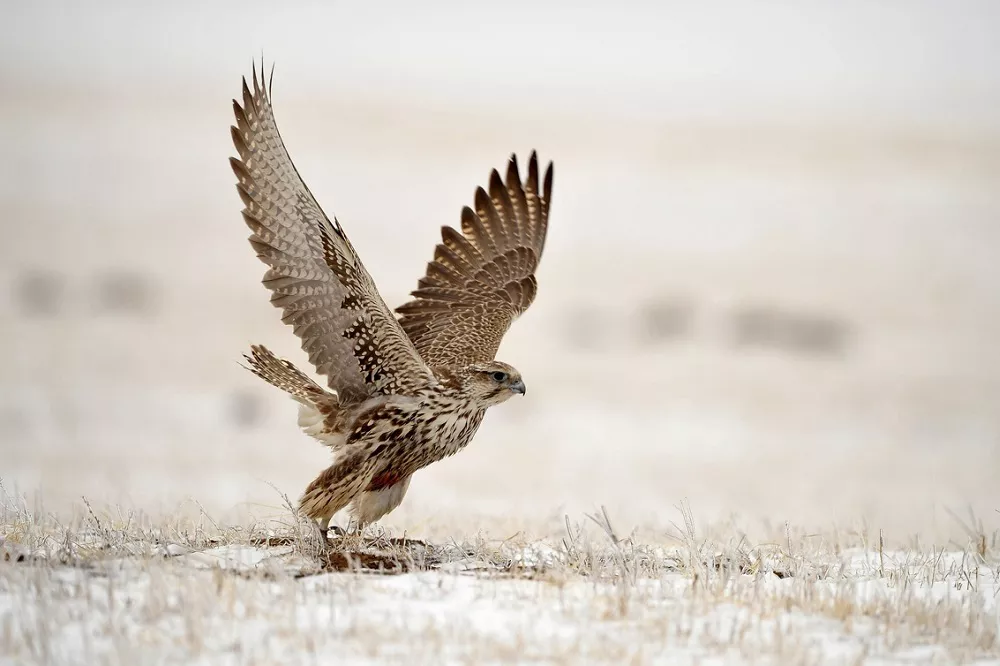The peregrine falcon is a magnificent bird of prey that is widely distributed across the world. With its striking appearance, powerful flight, and lightning-fast speed, the peregrine falcon has captured the hearts of bird enthusiasts and scientists alike. In this article, we’ll take a closer look at this fascinating bird, including its appearance, behavior, habitat, and conservation status.
- Appearance
The peregrine falcon is a medium-sized bird of prey that measures between 34 and 58 centimeters in length and has a wingspan of up to 120 centimeters. The bird’s head, back, and wings are dark gray or blue-gray, and its underparts are white or buff-colored with fine black bars. The peregrine falcon has a distinctive mustache-shaped mark on its face, which is called a “malar stripe.” The bird’s eyes are large, black, and piercing, and its hooked beak is used to tear apart its prey.
- Behavior
Peregrine falcons are known for their incredible speed and agility, making them one of the world’s most skilled hunters. These birds can dive or “stoop” at speeds of up to 240 miles per hour, making them the fastest animal on the planet. They are also capable of flying at high altitudes, and have been spotted at altitudes of up to 39,000 feet.
Peregrine falcons are monogamous birds, and pairs typically mate for life. During the breeding season, the birds will create a nest on a cliff or other high location, using twigs, grasses, and other materials. The female will lay between one and six eggs, which she will incubate for around 30 days. Once the chicks hatch, both parents will take turns feeding and caring for them.
- Habitat
Peregrine falcons are found on every continent except for Antarctica, and they can be found in a variety of habitats, including mountains, forests, grasslands, and cities. These birds are particularly well adapted to living in urban areas and have been known to nest on skyscrapers and other tall buildings.
- Conservation status
The peregrine falcon was once on the brink of extinction due to the use of pesticides, particularly DDT, which caused thinning of the bird’s eggshells. However, thanks to successful conservation efforts, the peregrine falcon has made a remarkable recovery, and its population is now stable or increasing in most areas. In the United States, the bird is listed as a species of “Least Concern” by the International Union for Conservation of Nature (IUCN).
In conclusion, the peregrine falcon is a fascinating and beautiful bird that has captured the imagination of people around the world. Its incredible speed and agility, as well as its striking appearance, make it one of the most remarkable birds of prey on the planet. While the peregrine falcon has faced many challenges over the years, its remarkable recovery is a testament to the power of conservation efforts and the resilience of nature.


 Facebook
Facebook  Instagram
Instagram  Youtube
Youtube 